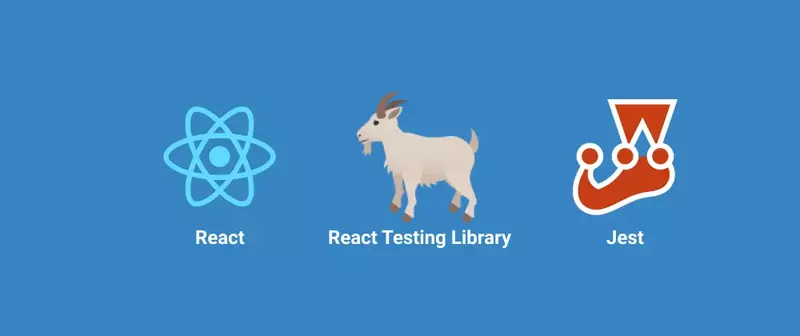The React Testing Library is a testing tool for React applications. It is designed to help developers test their React components in a simple, straightforward way, without having to write a lot of boilerplate code.
The library provides a collection of utilities for interacting with React components in a way that resembles how a user would interact with the components in a real-world scenario. This helps to ensure that the code being tested behaves as expected for end-users.
React Testing Library is also compatible with other testing tools, such as Jest and Enzyme, making it a versatile option for developers looking to improve their testing processes.
Benefits of React Testing Library
Improved Code Quality
React Testing Library helps to ensure that the code being tested is of high quality, which reduces the likelihood of bugs and other issues being introduced into the application. This helps to improve the overall stability and reliability of the application.
Faster Development
React Testing Library makes it easier and faster to write tests, as it provides a simple and straightforward API that eliminates the need to write a lot of boilerplate code. This helps developers to focus on writing high-quality tests, rather than worrying about the mechanics of testing.
Better User Experience
React Testing Library tests components from the user’s perspective, which helps to ensure that the application behaves as expected for end-users.
This leads to a better user experience, as users are more likely to have a positive experience with an application that works as expected.
Better Collaboration
React Testing Library’s simple syntax and focus on testing components from the user’s perspective makes it easier for different teams and stakeholders to understand what the tests are checking and why. This helps to improve collaboration and communication within a development team.
See also Exploring the Diverse Range of Miso Robotics Stock in World Technology
Improved Time-to-Market
React Testing Library helps to catch issues early on in the development process, which can be addressed more quickly and easily than if they were caught later in the development lifecycle.
This helps to reduce the time it takes to bring an application to market, as fewer issues need to be addressed.
Better Test Coverage
React Testing Library makes it easy to test all aspects of a React component, including its behavior, accessibility, and user interactions. This helps to ensure that the component is thoroughly tested and that potential issues are caught early on in the development process.
Increased Confidence in Code
React Testing Library’s focus on testing components from the user’s perspective and its ability to catch issues early on in the development process helps to increase confidence in the code being tested.
This makes it easier to make changes to the code with the knowledge that the changes will not break the application.

Tips for Using React Testing Library
Start Small: When getting started with React Testing Library, it’s best to start with small tests and gradually add more complex tests over time.
Test from the User’s Perspective: React Testing Library tests components from the user’s perspective, so it’s important to think about what the user would expect when writing tests.
Use the debug() Method: The debug() method is a useful tool for debugging tests, as it allows you to inspect the state of a component during a test.
Key Features of React Testing Library
Testing from the User’s Perspective
React Testing Library tests components from the user’s perspective, which helps to ensure that the application behaves as expected for end-users.
See also Exploring the Latest Gadgets: Which One is Right for You?
This is achieved by providing utilities for interacting with the components in a way that resembles how a user would interact with them.
Improved Test Readability
React Testing Library provides a simple and straightforward syntax for writing tests, which helps to improve the readability of tests. This makes it easier for other developers to understand what the tests are checking and why.
Better Debugging Capabilities
React Testing Library includes a variety of tools and methods that can be used to debug tests, such as the debug() method, which allows developers to inspect the state of a component during a test. This helps to identify any issues and make fixing them faster and easier.
Improved Test Maintainability
React Testing Library’s simple syntax and focus on testing components from the user’s perspective helps to ensure that tests are easy to maintain over time.
This is because the tests are more closely tied to the expected behavior of the components, rather than the implementation of the components.
Better Test Coverage
React Testing Library makes it easy to test all aspects of a React component, including its behavior, accessibility, and user interactions. This helps to ensure that the component is thoroughly tested and that potential issues are caught early on in the development process.
Supports Latest React Features
React Testing Library is regularly updated to support the latest React features, such as hooks and context. This helps to ensure that developers can test their components effectively, even as React evolves over time.
Conclusion
React Testing Library is a game-changer for hire ReactJS developers looking to improve their testing processes.
See also Streamlining Transactions in the USA: The Role of Mobile Banking Apps in Payment Processing
With its simple and intuitive API, accessibility testing, and compatibility with other testing tools, React Testing Library provides developers with a comprehensive solution for testing their React applications.
Whether you’re just getting started with testing or looking to improve your existing testing process, React Testing Library is definitely worth considering.Also Read: How do I increase followers on Instagram in one week?